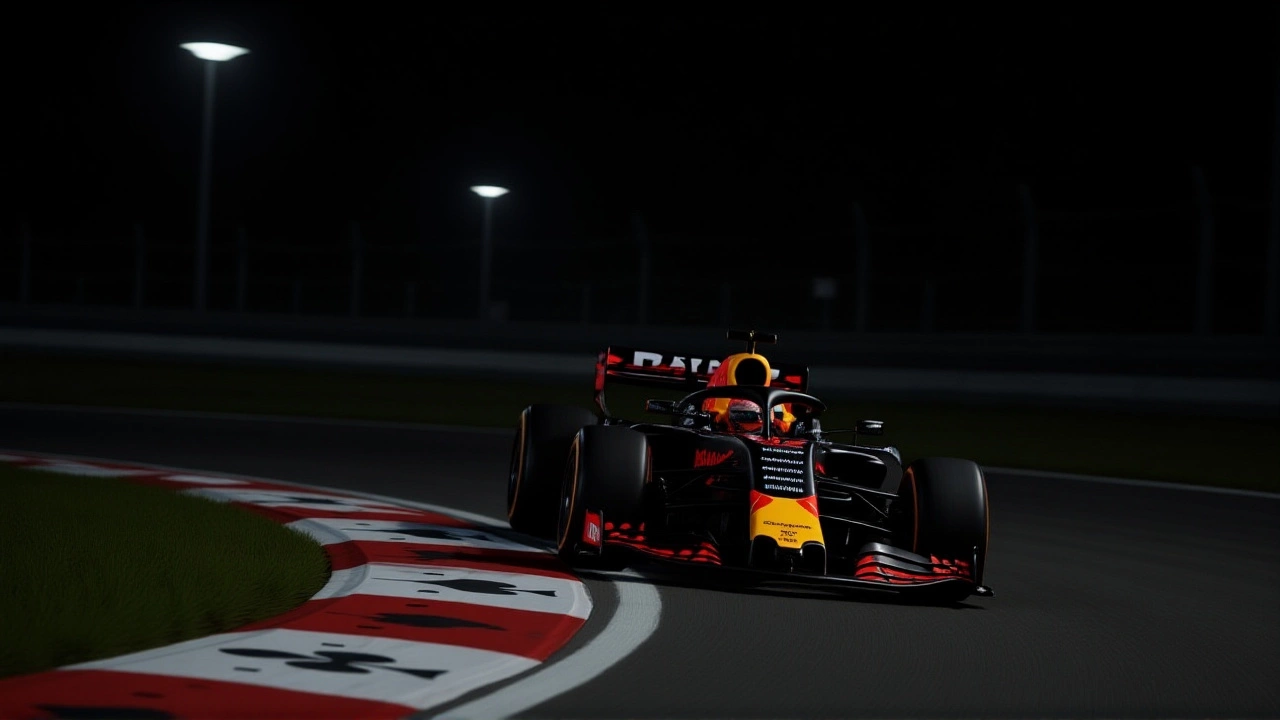On November 21, 2025, Max Verstappen turned a dominant performance at the Las Vegas Grand PrixLas Vegas, Nevada into a championship earthquake. Crossing the line 20 seconds clear after seizing the lead on the first corner from polesitter Lando Norris, Verstappen looked set for a routine win—until the FIA’s post-race technical checks revealed a seismic violation. Both McLaren Formula 1 Team cars, driven by Norris and Oscar Piastri, were disqualified for skid blocks measuring under 9 mm, a clear breach of Article 3.15 of the FIA technical regulations. The decision, confirmed in an official statement reported by Sports Illustrated, didn’t just strip McLaren of race points—it rewrote the entire 2025 title narrative.
The Race That Changed Everything
Verstappen’s win was textbook Red Bull efficiency. He didn’t need a late-race surge; he simply outpaced everyone from the start. Norris, who’d claimed pole, braked too late into Turn 1, ran wide, and lost the lead before the first chicane. What followed was a masterclass in tyre management. "It worked really well," Verstappen said in his post-race interview. "Normally, the race is always a tough one for us—we’re not that great on tyres. But today, we had that a little bit more under control. I could push a little bit more, and that unlocked a bit more pace." He wasn’t just fast—he was consistent. His ability to stay out longer on the fragile Pirelli C4 compound allowed him to split the race in half, building a gap that grew with every lap. By lap 50, he was 15 seconds ahead. By the checkered flag, it was 20. He also claimed his third DHL Fastest Lap Award of the season, his sixth win of 2025, according to Formula 1’s official records.
McLaren’s Technical Blow
The disqualification stunned the paddock. Norris had been leading the Drivers’ Championship by 49 points before the race. He’d outpaced Piastri by 30 points in qualifying, and with a second-place finish, he looked poised to pull away. Instead, the team scored zero points. The skid block violation—where the rear underbody wear strips fell below the 9 mm legal minimum—wasn’t a one-off. Both cars failed the same test. The FIA’s laser scans, conducted at the Las Vegas Strip Circuit’s technical center, showed identical measurements: 8.7 mm on Norris’s car, 8.6 mm on Piastri’s. That’s not a margin of error. It’s a calculated risk.
According to The Independent, Norris’s pace collapsed in the final three laps, dropping from seven seconds behind Verstappen to 23 seconds. That wasn’t tyre degradation. It was damage. The skid blocks, meant to protect the car’s floor, had worn down so far that aerodynamic balance was compromised. McLaren’s engineers had pushed the limits—and lost.

Championship Chaos
The revised standings? A complete reshuffle. George Russell, who finished third on track, was elevated to second. Max Verstappen and Oscar Piastri are now tied on 287 points, 24 behind Norris’s 311. Mercedes’ Kimi Antonelli is closing in on Lewis Hamilton for sixth, while Red Bull now leads the Constructors’ Championship by 38 points over McLaren.
With only 58 points left to play for across the final two races and one sprint event, the title battle has become a knife fight. Verstappen has six wins. Norris has five. But Verstappen has momentum. He’s finished on the podium in six of the last seven races. Norris, meanwhile, has had two DNFs and now a DQ. The psychological toll? Unquantifiable.
What’s Next in Brazil
The championship shifts to the Interlagos Circuit in São Paulo, Brazil, on November 29–30. It’s a track where Red Bull has historically struggled—until last year, when Verstappen won in the rain. This time, the weather forecast is dry. The track is bumpy. The tyres will be brutal. And the pressure? Suffocating.
"We’ve had a really up-and-down season," Verstappen told reporters on November 22. "Tough times, but also beautiful moments. We learned a lot. That’s valuable for next year. But right now? We’re enjoying it." McLaren’s response? Silence. No press conference. No technical breakdown released. Just a terse statement: "We accept the FIA’s decision and will review our processes." That’s not confidence. That’s damage control.

The Bigger Picture
This isn’t just about points. It’s about trust. In F1, teams constantly walk the line between innovation and regulation. McLaren’s skid block violation suggests they’ve been pushing the envelope for weeks—perhaps months. The FIA has been tightening enforcement since 2023, after the Red Bull floor controversy. Now, they’ve made an example. And it’s not just McLaren who’s watching.
Teams like Ferrari and Aston Martin, both fighting for third in the constructors’ standings, are now nervously checking their own skid blocks. The margin for error is thinner than ever. And Verstappen? He’s not just racing for a title—he’s racing to cement his legacy as the most dominant driver of this era.
Frequently Asked Questions
How did the skid block violation affect McLaren’s race performance?
The skid blocks, which protect the car’s underbody, had worn below the 9 mm legal limit, causing aerodynamic instability. This led to a significant drop in downforce, especially in high-speed corners, which explains why Norris’s pace collapsed in the final laps. The car became unpredictable, forcing him to back off—costing him not just the win, but the championship buffer he’d built.
Why was only McLaren penalized and not other teams?
The FIA conducts random, post-race skid block inspections on all cars, but only McLaren’s measurements fell below 9 mm. Other teams, including Red Bull and Mercedes, passed with margins of 9.2–9.8 mm. The FIA has stated this isn’t a targeted crackdown—it’s standard procedure. But the timing, with Norris leading the championship, made it look selective. Still, the data doesn’t lie.
Can Verstappen still win the title even if Norris finishes ahead in the next two races?
Yes. With 58 points remaining, Verstappen only needs to outscore Norris by 25 points across the final two races and one sprint. If Verstappen wins both races and Norris finishes third or lower, Verstappen wins the title. Even if Norris wins one and Verstappen gets second, it’s still possible. The math is tight, but the door is wide open.
What’s the significance of Verstappen’s sixth win of the season?
Six wins in a 24-race season puts Verstappen on pace for his fourth world title in five years. Only Sebastian Vettel (2011, 2012) and Lewis Hamilton (2014, 2015, 2018, 2019) have matched or exceeded that win total in a single season this century. It signals not just speed, but reliability and consistency—traits that often decide championships under pressure.
How might this affect McLaren’s future car design?
McLaren will likely redesign their skid block mounting system to ensure compliance, possibly using harder composite materials or reinforced edges. They may also shift to a more conservative setup for the remainder of the season, prioritizing durability over outright downforce. The team’s 2026 car development may be delayed as engineers rework the underbody to avoid future penalties.
What’s the historical precedent for such a dramatic title shift after a disqualification?
The closest parallel is the 2008 Singapore Grand Prix, where Renault’s Nelson Piquet Jr. deliberately crashed to help Fernando Alonso win—leading to a team disqualification and a championship shift. But this is different: no foul play, just a technical infraction. The last time a team lost a 49-point lead due to a post-race penalty was 1994, when Benetton was stripped of points for illegal fuel, handing Schumacher the title. This is the biggest points swing from a technical breach in 30 years.
